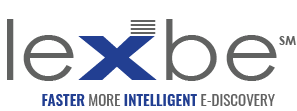The Lexbe Blog is a hub for eDiscovery best practices, industry insights, and company news and events. By default, blog posts display by publish date in order of most to least recent. If you’d like to filter by category or by content tag(s), you may do so using the selectors below.
Additional eDiscovery Resources
Explore Lexbe’s other resources:
